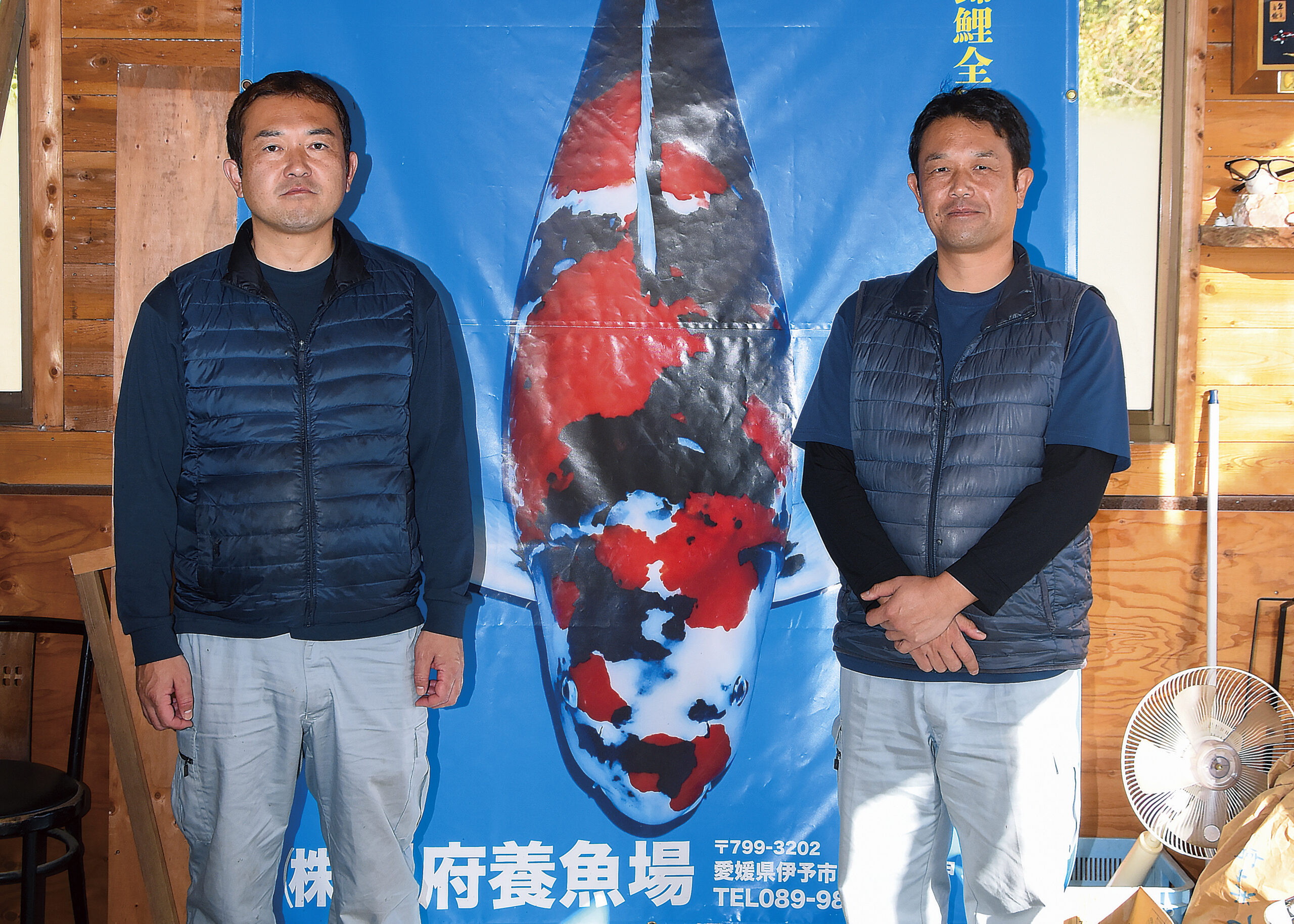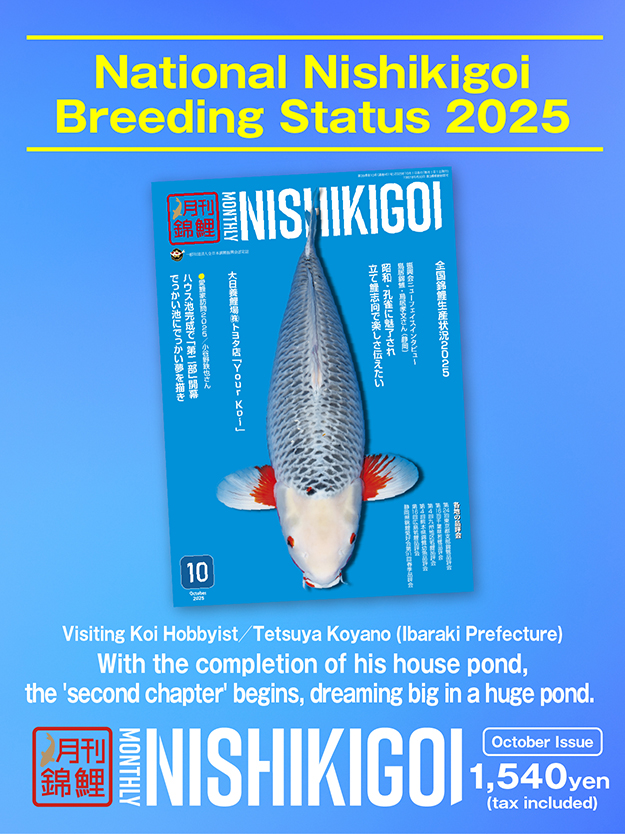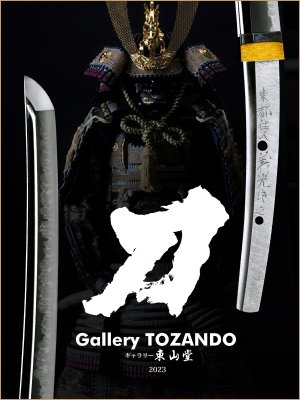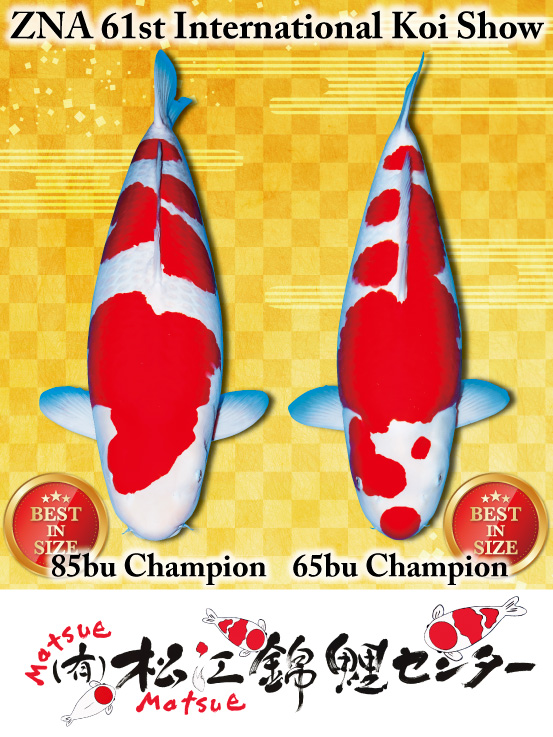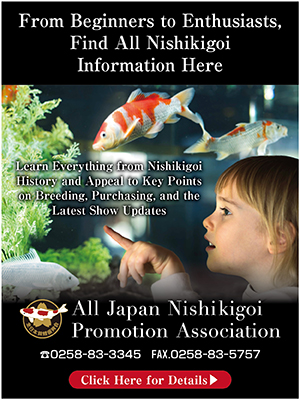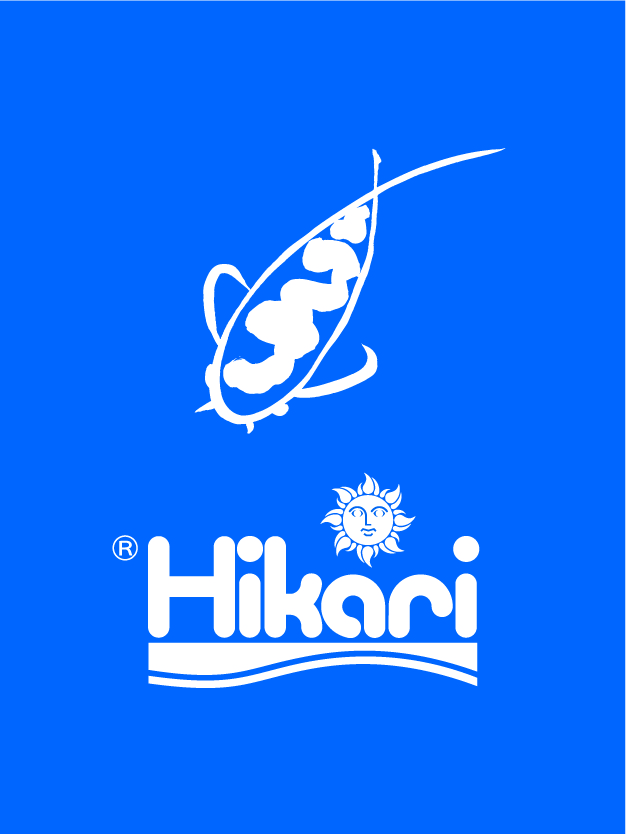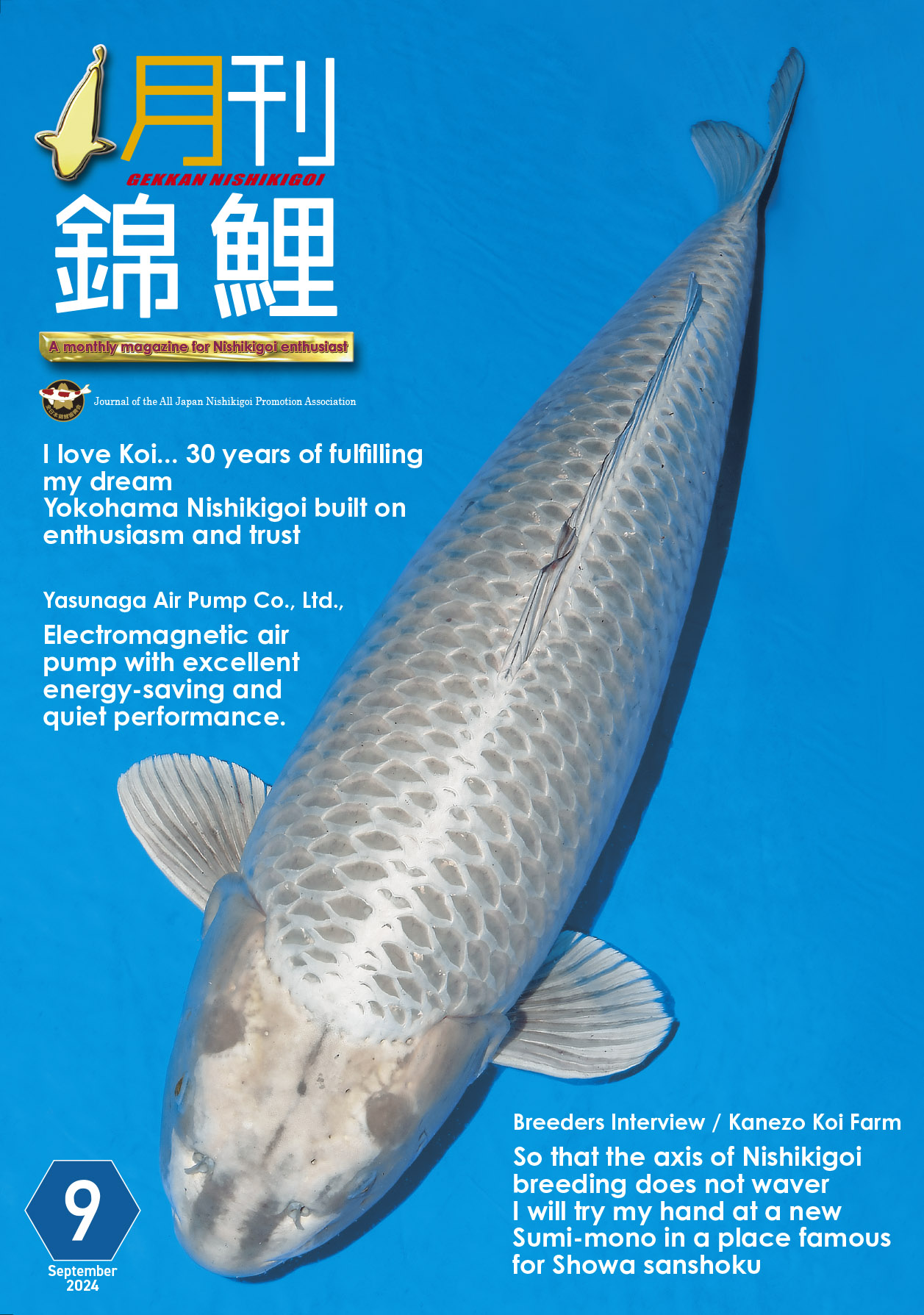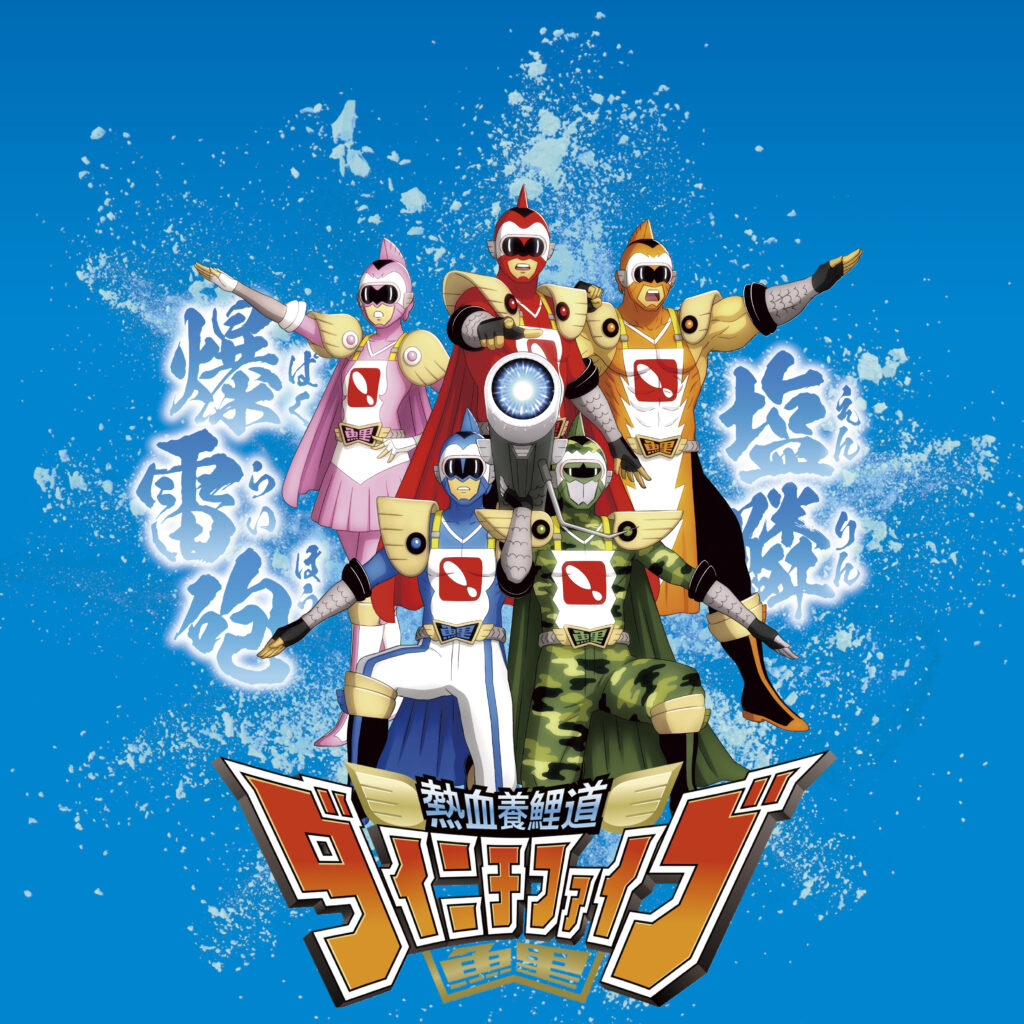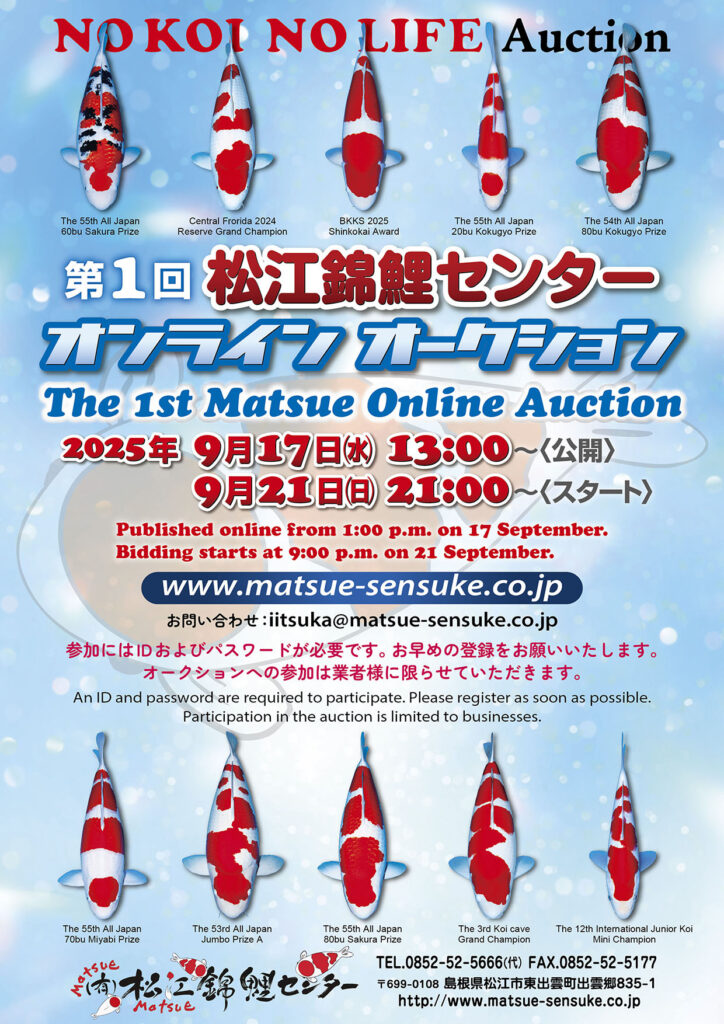Second-generation male parents boost quality.
Ginrin Taisho Sanshoku’s astonishing transformation.
―What are your thoughts on the development of Ginrin varieties?
Takaharu: By the time they reach three or four years old, they inevitably fall behind.
―Most of the Ginrin Taisho Sanshoku that win awards tend to be smaller koi—is that because of this?
Takaharu: We put some in mud ponds to see how big they can grow… but there’s also the idea that it’s better to sell the beautiful ones early and have them win awards sooner. When they grow bigger, the silver tends to become less noticeable.
―Are smaller koi easier to sell for that reason?
Takaharu: That’s right. With Ginrin varieties, few people buy them with the intention of raising them to a large size.
―Having a good pattern as a Taisho Sanshoku and beautiful Ginrin is highly sought after… It’s a demanding variety.
Takaharu: Even among the Gosanke, Taisho Sanshoku is said to be one of the most difficult varieties—adding Ginrin makes it even more challenging. In our case, we just happened to breed them as we kept on breeding (laugh). Even with colour-enhancing feed, our koi maintain clean white skin, and we’re often told the Ginrin shine is also excellent. There weren’t many with good Ginrin shine initially, but since we started using second-generation males, our Ginrin Taisho Sanshoku have shown excellent lustre.
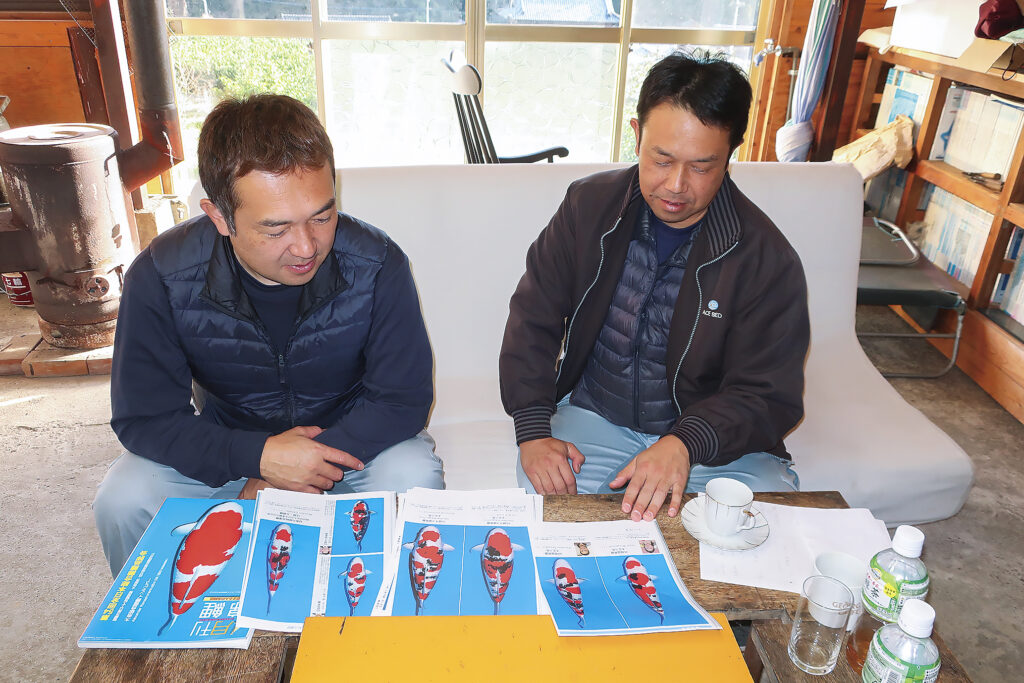
―Is that male koi from your line?
Takaharu: Yes, that’s right. All of our current Ginrin males are homebred.
—Do all of them have good Ginrin shine?
Takaharu: Yes, the ones we’re currently using do.
―Does Ginrin’s shine vary depending on his compatibility with the female? Have you ever noticed a drop in shine when the male was paired with a different female?
Takaharu: We bred about two females with that male, and both turned out well, so the male was the key. It was an excellent spawning — the sumi came out, the Ginrin shine was incredible, and the skin was white. The person at Matsue Nishikigoi Centre even asked, “How are you getting such good results?” But honestly, it just happened (laughs).
—What bloodline does your Ginrin Taisho Sanshoku male parent come from?
Takaharu: I believe it started with a Taisho Sanshoku from Sakai Fish Farm, which we paired with a Ginrin Taisho Sanshoku male we got from Miyoshi Fish Farm in Ehime.
Takaharu: We bred from that line for a few years, but the results weren’t perfect then. We just kept a few koi around, and when we used one of those as a parent, we got outstanding offspring. I don’t think many from the first generation were kept.
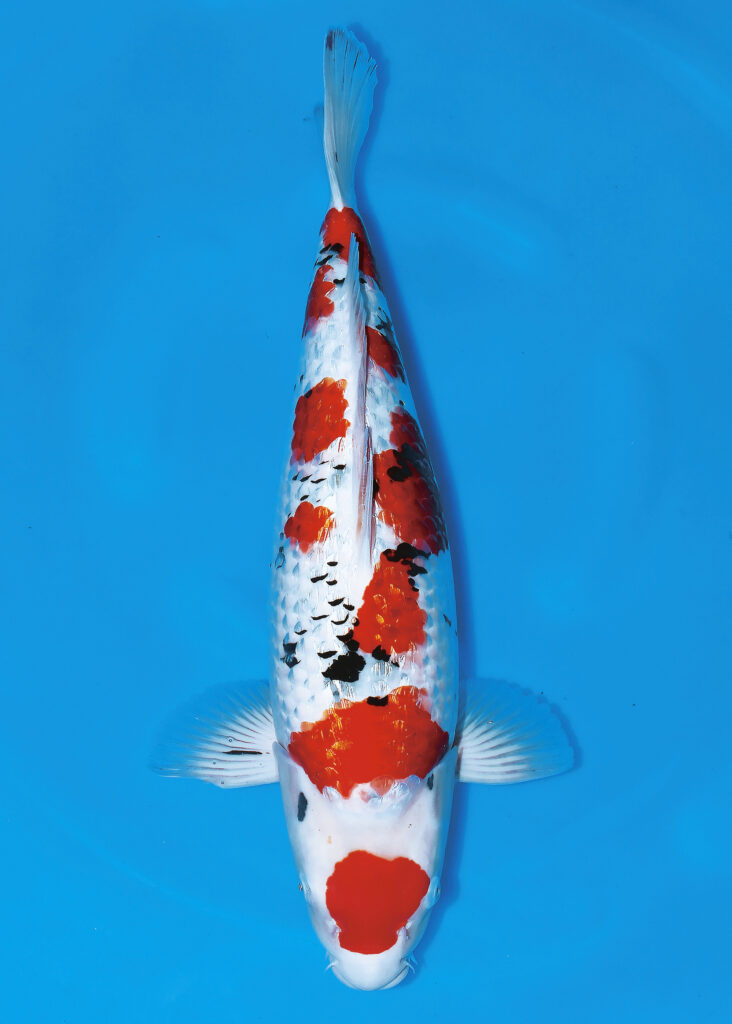
At the Yume-koi-ten (the best koi gallery):
2 years old, 54cm
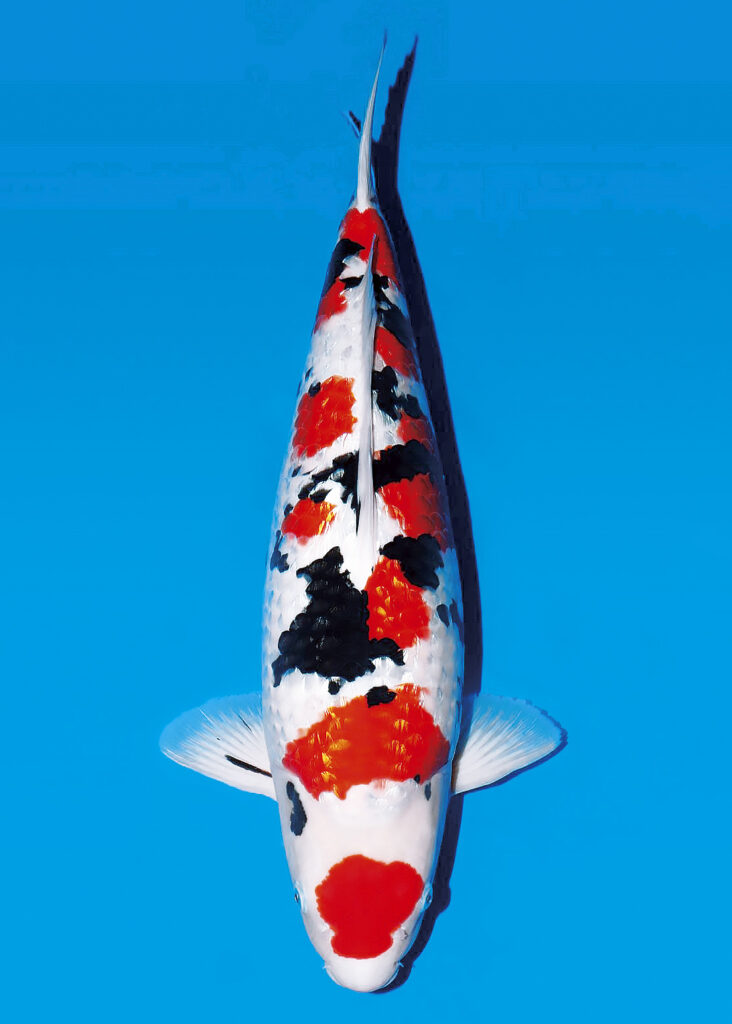
—How many koi do you raise to two years old?
Takaharu: This year, there are fewer. Some of the second-generation parents have died. We’ve been using their offspring as parents. They’ve been turning out alright, but we haven’t been able to keep as many over the past two or three years.
Nobuhiro: Last year, we raised about 200 koi. Of those, around 30 to 40 were Ginrin Taisho Sanshoku.
Takaharu: This year, there are even fewer.
—Does the 200 include other varieties as well?
Nobuhiro: Yes. There were Kohaku, Taisho Sanshoku, and Jumbo Tosai of Showa Sanshoku, around 35 cm. Including the Mujimono, it’s about 300. That’s the number we raise in the mud ponds.
—Among them, about 30 are Ginrin Taisho Sanshoku. It’s valuable.
Takaharu: So even if people ask, “Do you have a lot of koi that could win the Baby Champion prize?”—of course not! (laughs)
Takaharu: Speaking of one that grew big and turned out really well, there was the Ginrin Taisho Sanshoku we entered in last year’s All Japan Combined Nishikigoi Show Yume-koi-ten (the best koi gallery) (Photo ②). Tedori Fish Land purchased it, and by the time it was three years old, the sumi had developed beautifully.
Nobuhiro: There wasn’t any sumi then, but I told Mr Tsujimoto (the CEO of Tedori Fish Land ) that the sumi would be out well in his mud pond. So, he took it home. It went beyond our expectations, and he was happy, too. We didn’t have one that good here, so it was a perfect match for his pond.
—Of course, the koi’s natural quality matters, but does compatibility with the pond also play a role?
Takaharu: I think so.
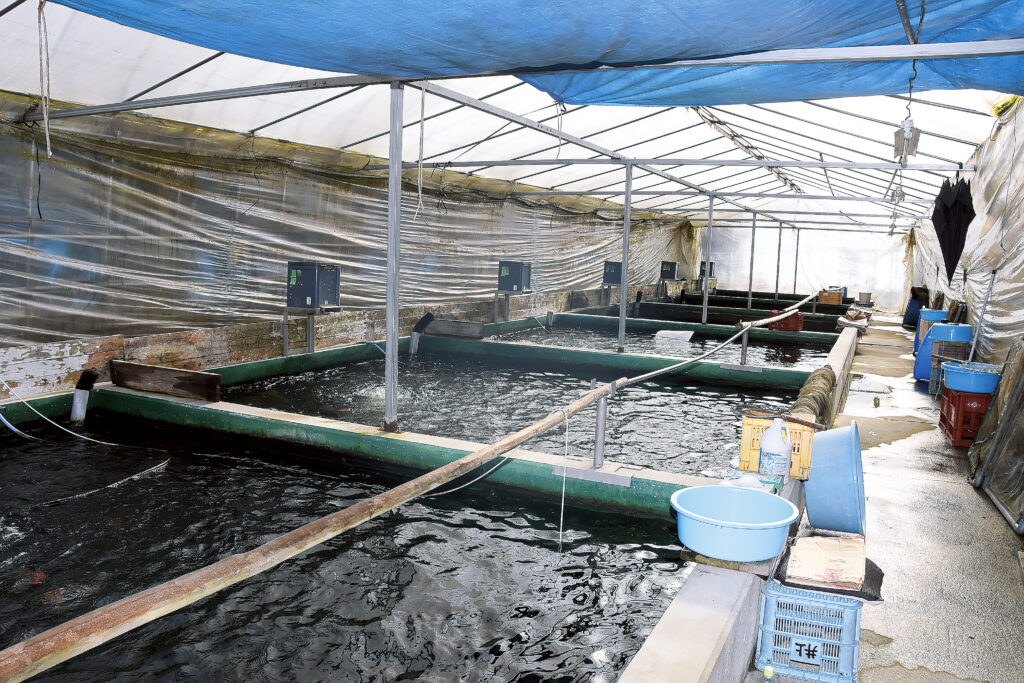
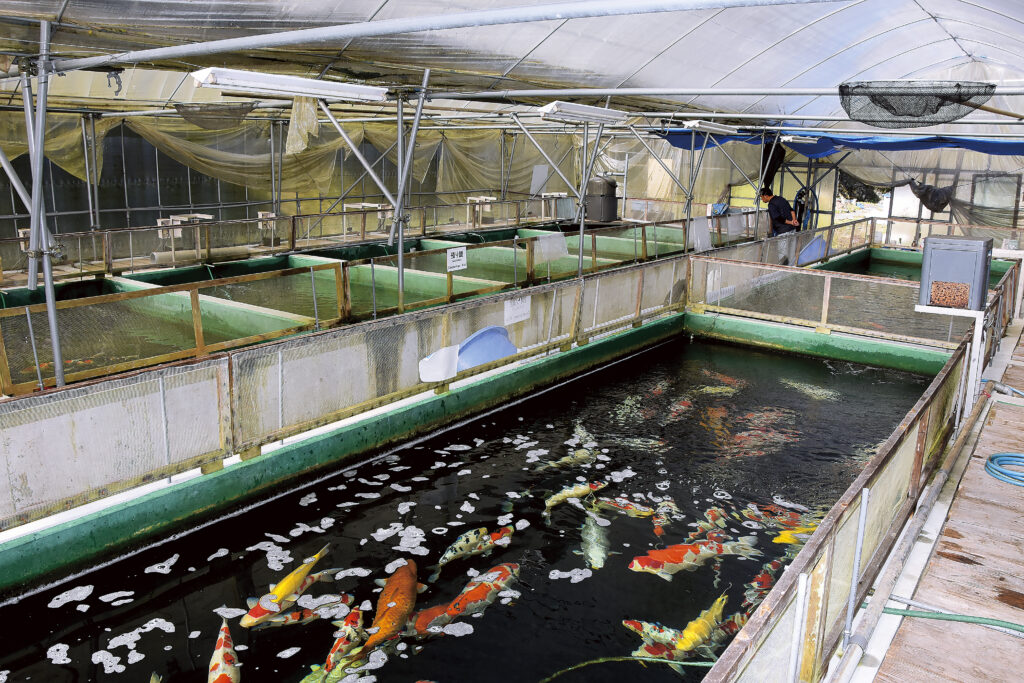
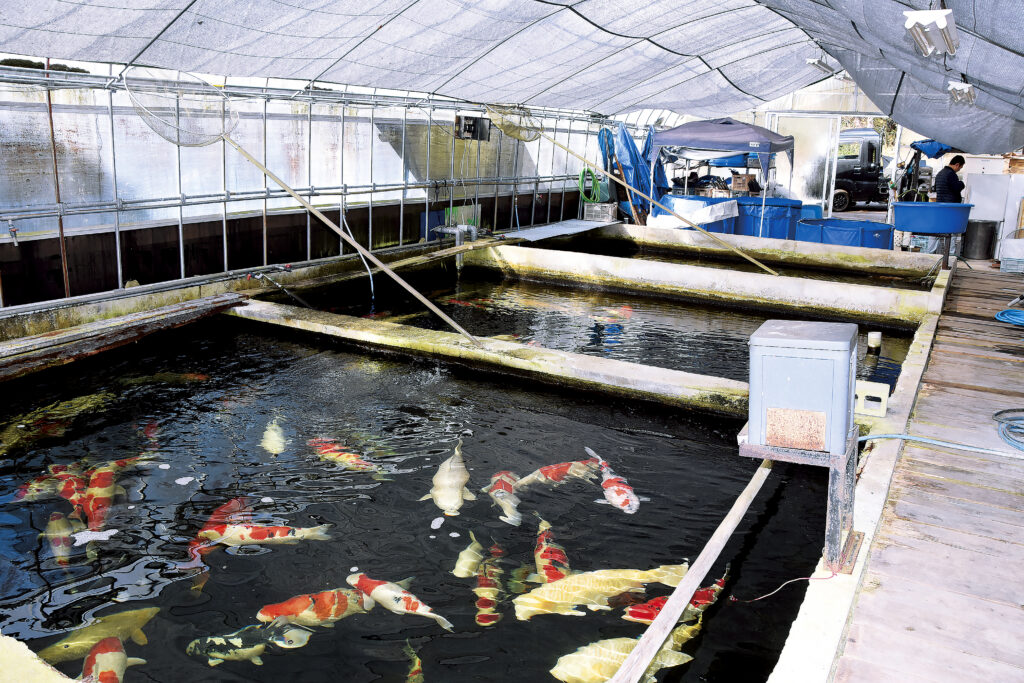
(To be continued in the part 2.)

